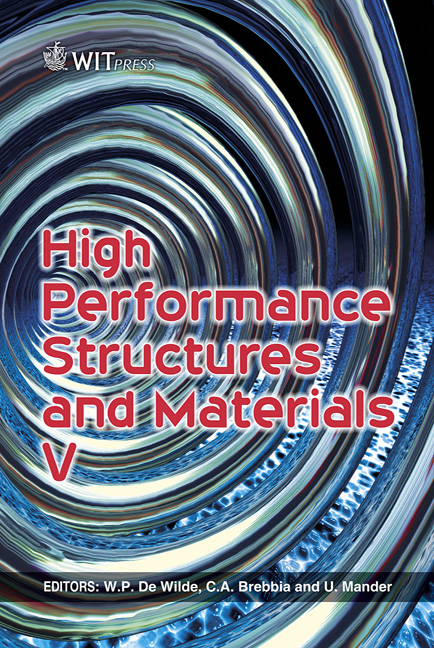Damage Simulation For The Lifespan Of Elastomers
Price
Free (open access)
Transaction
Volume
112
Pages
10
Page Range
547 - 556
Published
2010
Size
431 kb
Paper DOI
10.2495/HPSM100501
Copyright
WIT Press
Author(s)
P. Brož
Abstract
The principles of continuum damage mechanics (CDM) are employed to solve the fatigue damage characteristics of elastomers. In so doing, both the damage strain energy release rate and the elastic energy, as a function of strain versions, of a damaged material rendered according to Ogden model, are put forward. Further, the damage evolution low is set up to express the fatigue lifespan in terms of the nominal strain amplitude subject to cyclic loading. Fatigue tests of a carbon rubber were performed to stipulate the fatigue life-dependence on the nominal stress amplitude, and to compare experimental data with the theoretical formula derived for the fatigue life. To get the stress-strain curve, uniaxial tension tests on a carbon-filled natural rubber were realized. For the said substance, material parameters were defined by fitting the experimental stressstrain curve to Ogden constitutive simulation. Keywords: carbon rubber, dissipative mechanism, filled elastomers, fitting, hyperelasticity, state law, strain energy potential. 1 Introduction Continuum Damage Mechanics introduces a scope to express the damage constitutive equations and to extend them to 3D, according to computations of construction. Some essential aspects of both general circumstances and numerical studies going with CDM are included in publications [1–4]. The Lemaitre damage evolution law of a damage rate determined by plasticity adding, which is also improved by the elastic energy density, is able to solve the effects: ductile failure, fatigue, creep and creep-fatigue of metals or polymers [1, 6]. In the case of materials such as composites, concrete and filled elastomers,
Keywords
carbon rubber, dissipative mechanism, filled elastomers, fitting, hyperelasticity, state law, strain energy potential





